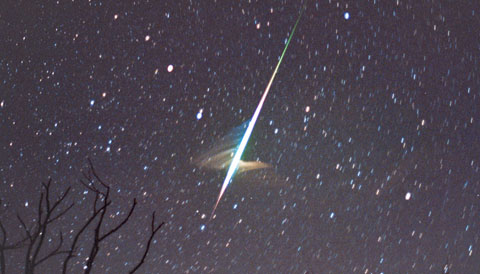This year's Leonid meteor shower, which peaks tonight, will offer modest numbers of "shooting stars" — but might reward you with some dazzling fireballs.
[caption id="attachment_255429691" align="alignright
This year's Leonid meteor shower, which peaks tonight, will offer modest numbers of "shooting stars" — but might reward you with some dazzling fireballs.
[caption id="attachment_255429691" align="alignright

The direction to watch is wherever your sky is darkest. Notice the meteors' flight paths; only those streaking away from the direction to the constellation Leo are Leonids. They're incredibly fast-movers as meteors go, striking Earth's atmosphere at 71 km per second (160,000 mph). Sometimes they create dazzling fireballs with an afterglow (technically known as a train) that can linger as a ghostly thread in the sky for up to a minute.
Another, less-known meteor shower is going on simultaneously — the Taurids. They're sparse but tend to be very bright and much slower. And you're bound to see a few sporadics that aren't associated with any major shower.
Be sure to bundle up warmly; meteor-watching is always colder than you expect. Ideal meteor-watching equipment is a comfortable lounge chair, a warm sleeping bag, and a pillow. If you live in a city or suburb, consider traveling to a dark location far from city skyglow. In any case, find a spot where no lights glare directly into your eyes.
For more information, read our article Basics of Meteor Observing. And you can also download our free eBook on meteor observing.
Comments
You must be logged in to post a comment.